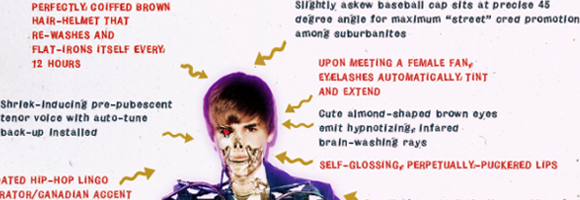pop replicant

In the ‘Süddeutsche Zeitung,’ one of Germany’s biggest transregional daily newspapers, I just read a wonderful review of the 3D-documentary ‘Never say never’ (Chu 2011) on Justin Bieber. Jan Füchtjohann begins ↑his review thus:
Does the teenie-popstar Justin Bieber dream of electrical sheep? Just like in Philip K. Dick’s science-fiction novel and blueprint of ‘Blade Runner,’ ‘Do androids dream of electrical sheep?’ there indeed is a growing number of people who try to find out if Justin Bieber is a regular boy, or a replicant who should be phased out. [my translation—put the blame on me]
‘Never say never’ does a good job in rendering Bieber human, Füchtjohann says, ‘but then again we know from Blade Runner, that even family-histories can be simulations made up from scratch.’ [my translation] Later he quotes US-American cultural critic ↑Steven Shaviro on the ‘post-cinematic celebrity:’
They circulate endlessly among multiple media platforms (film, television talk shows and reality shows, music videos and musical recordings and performances, charity events, advertisements and sponsorships, web- and print-based gossip columns, etc.), so that they seem to be everywhere and nowhere at once affectively charged and iconically distant. (Shaviro 2010: 7-8)
This is nicely put and in turn reminds me of Gibson’s ‘Idoru’ (1996).

